A while ago, A&B Naturals, the local store that sells my breads on weekends, let me know that the “lunch crowd” were hungry for some nice rolls to go with their smoothies.
Since I like trying out new things and find it rather boring to always bake the same breads, I jumped at the chance to test some new recipes for rolls that had been on my to-do list for a long time.
Viewing my flour supplies, I decided to go with kamut, an ancient wheat with a lovely golden color and delicate, nutty taste.
Adapted from a recipe of one of my bread baking heroes, Richard Ploner, the crusty rolls surpassed my expectations – and “the lunch crowd” at A&B’s loved them, too!

The kamut flour is soaked for 24 hours, and, for optimal taste (and least hands-on work), I allow the dough to slowly ferment overnight in the fridge. Therefore, plan on starting the preparation 2 days before you want to bake.
KAMUT ROLLS (adapted from Richard Ploner’s: “Brot aus Südtirol)
12 Rolls
Hot Soaker
300 g kamut flour
240 g water (122°F/50ºC)
Final Dough
240 g water (95ºF/35ºC)
6 g instant yeast
540 g kamut soaker (all)
300 g Italian Tipo 00 flour
60 g bread flour
5 g sugar
36 g olive oil
12 g salt
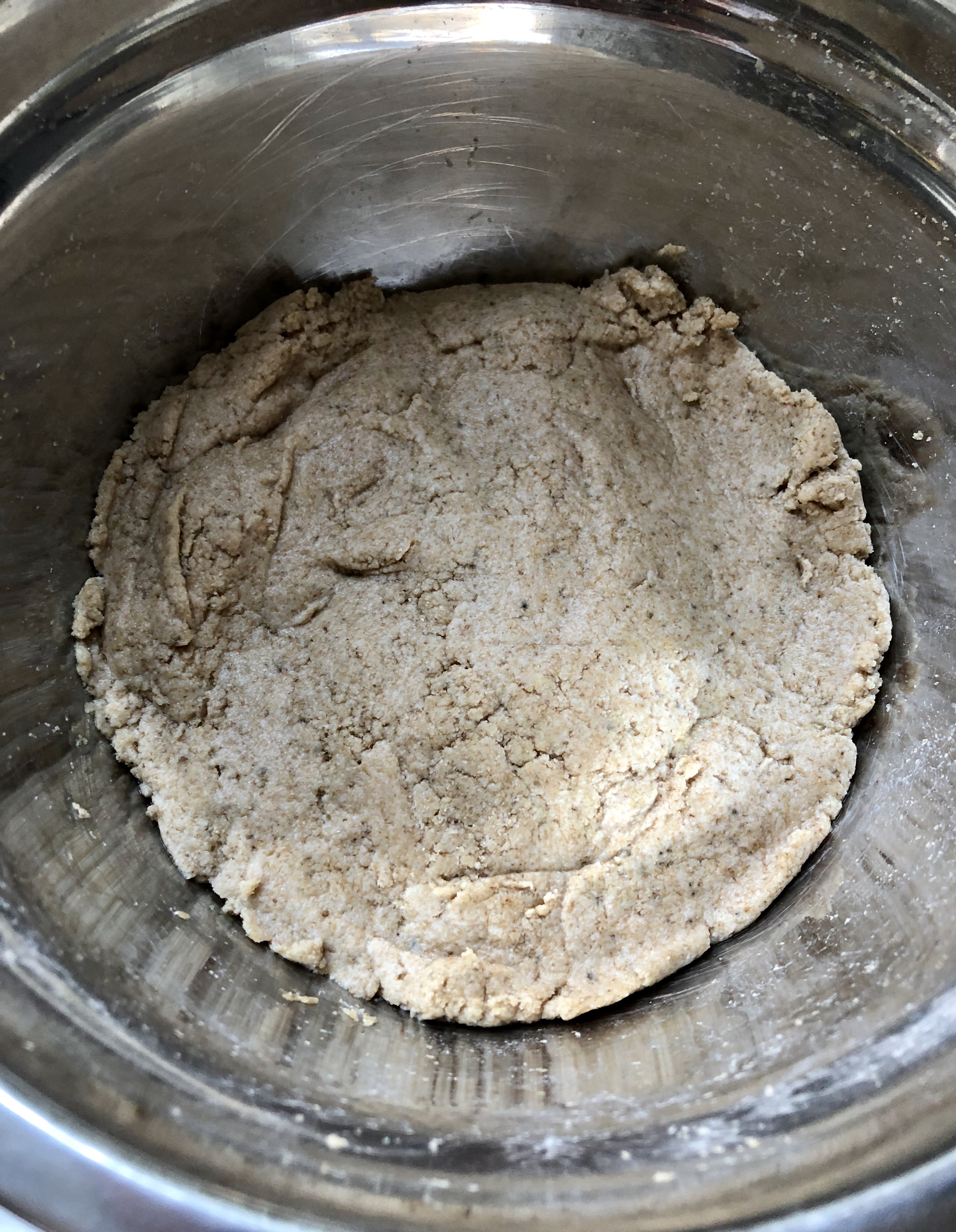
DAY 1
For the hot soaker, in medium bowl, stir together hot water and kamut flour until all flour is hydrated. Cover with plastic wrap, and leave for at least 24 hours at room temperature.
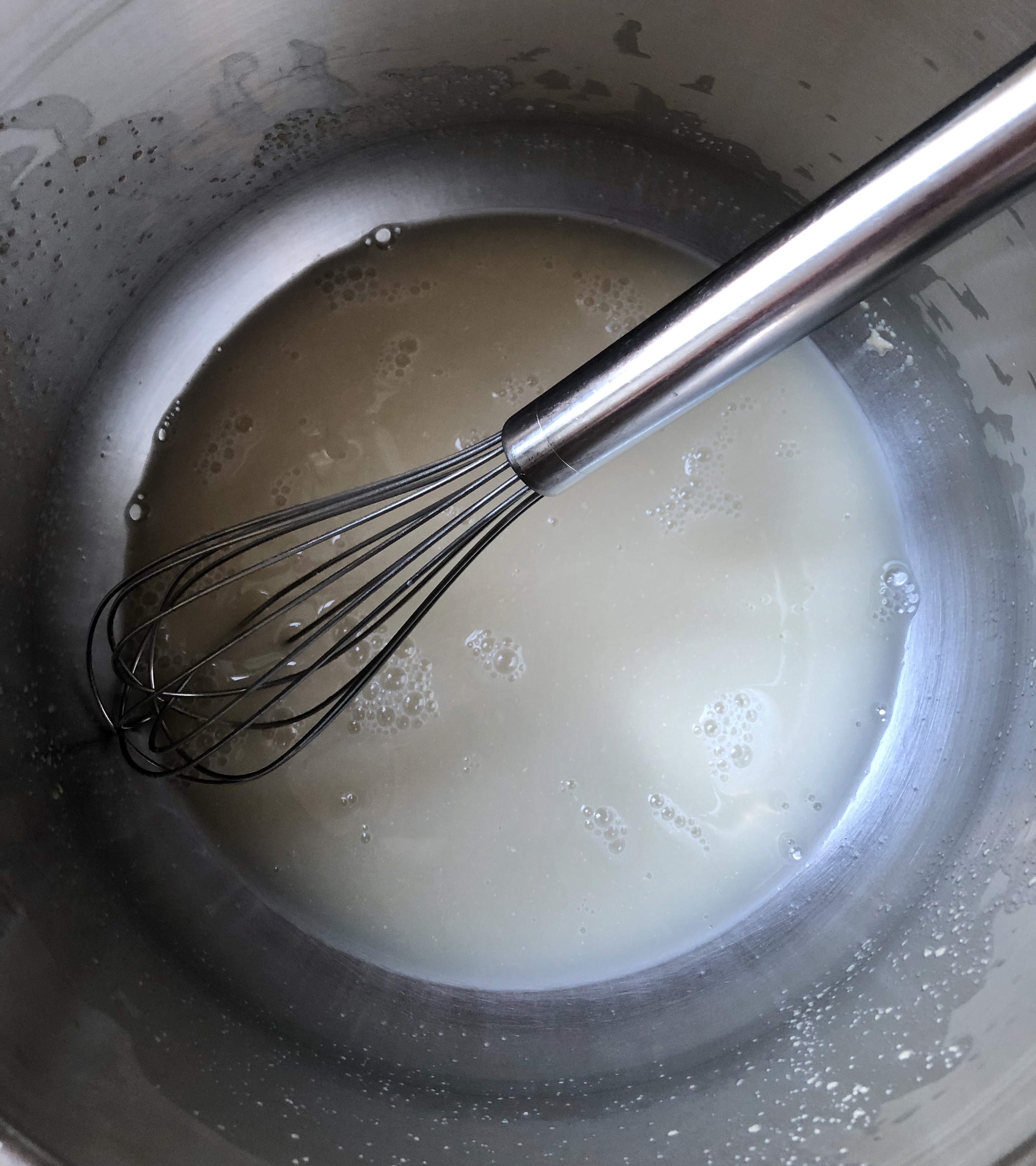
DAY 2
For the final dough, add yeast to warm water in mixer bowl and stir to dissolve (this step is optional, but it helps distributing the yeast faster in the dough). Add all other ingredients, and mix on low speed until all flour is hydrated.
Let it sit for 5 minutes, then knead on medium-low speed for 4-6 minutes until a smooth, elastic dough forms. It should be a bit sticky (if not, adjust with a little more water).
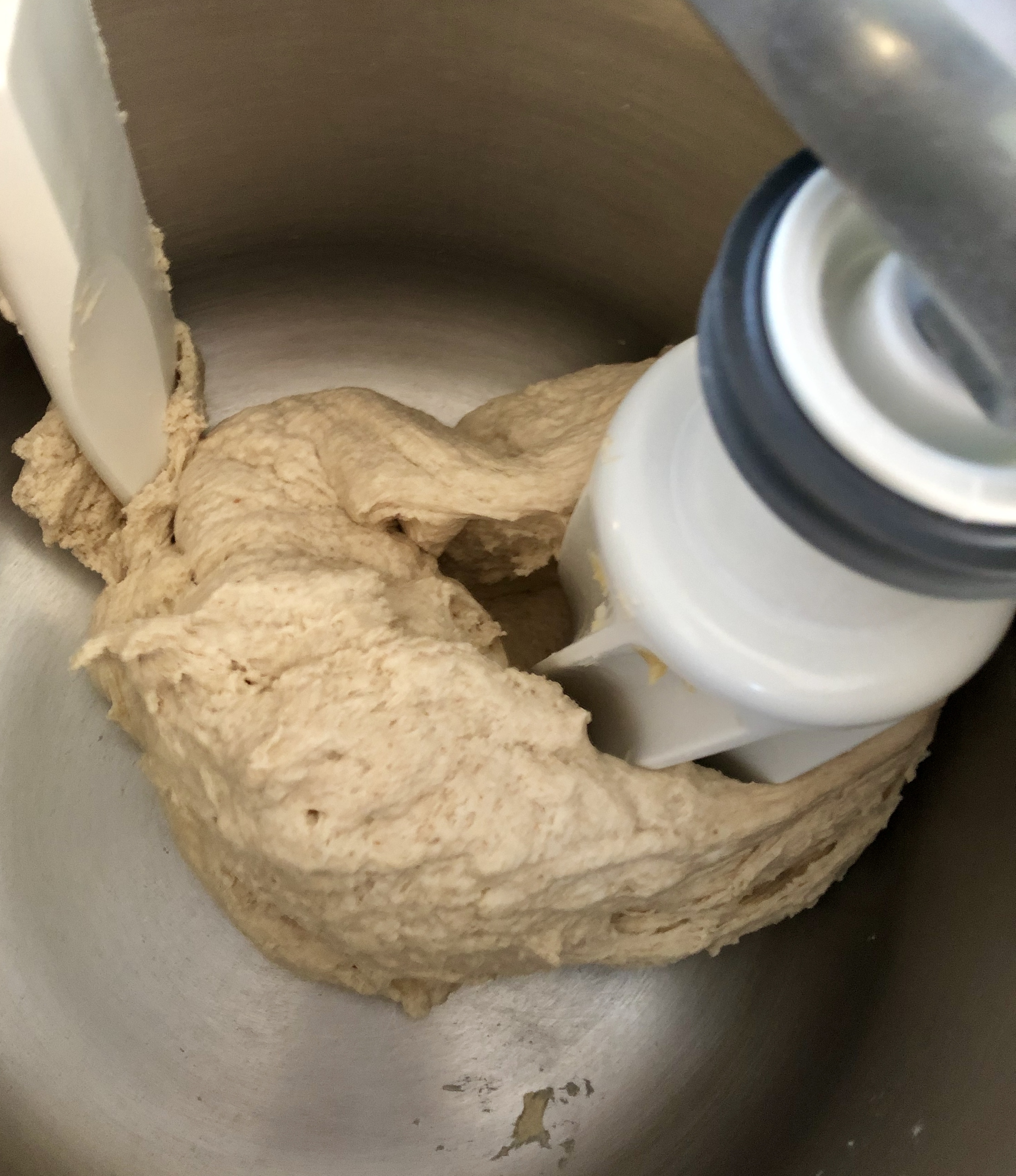
Transfer dough to a lightly oiled work surface. With oiled hands, pat and pull it into a rough rectangle. Stretch and fold dough from top and bottom into thirds, like a business letter, then from the left and right side in the same way.

After folding you have a neat package
Gather dough into a ball, place in a lightly oiled bowl, and let rest, covered, for 10 minutes. Repeat these stretches and folds for 3 more times, at 10 minute intervals.
After the last fold, place dough in the refrigerator overnight. (For easier storage in the fridge, I usually divide the dough in half, and place both pieces in plastic containers with lid).
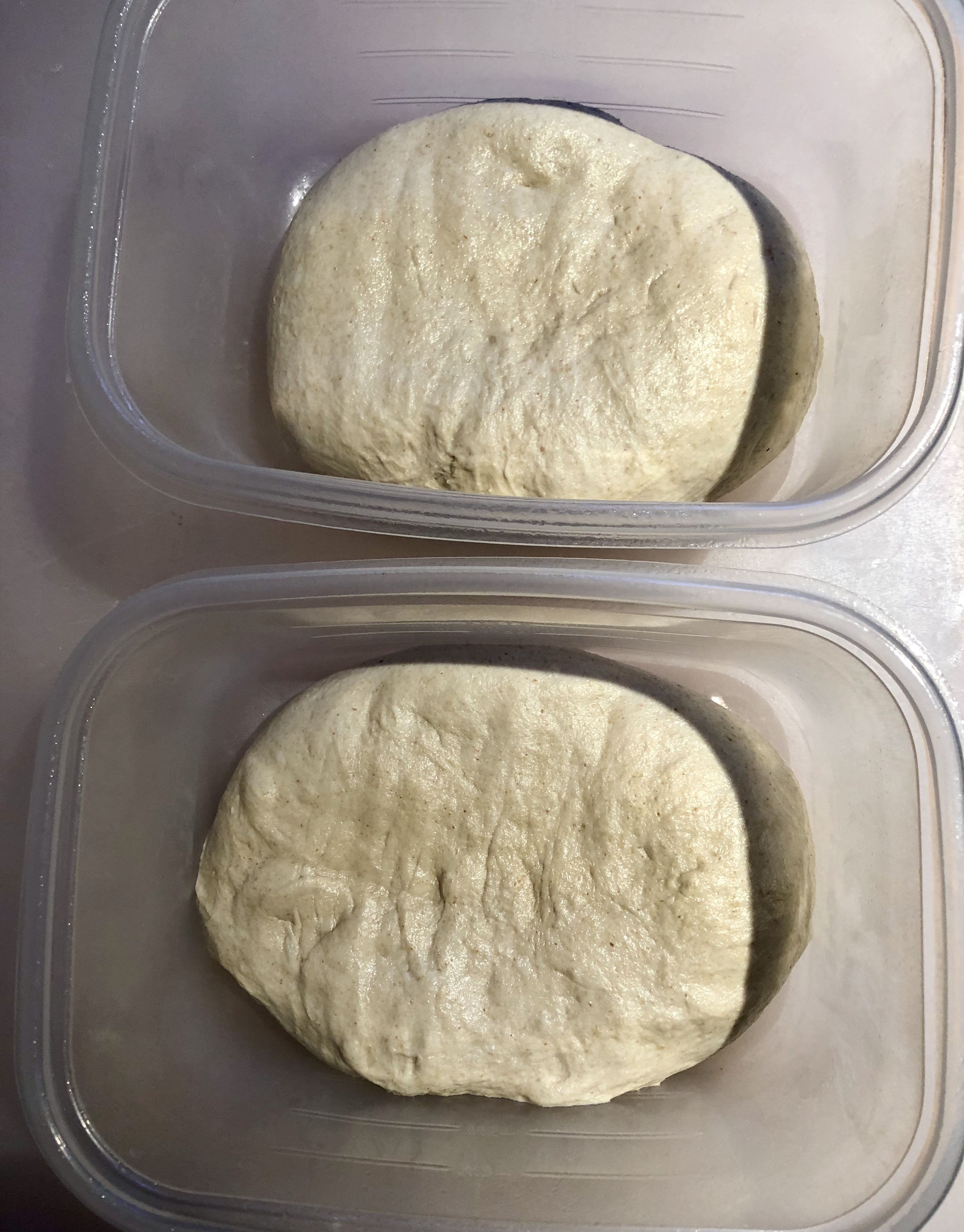
DAY 3
Remove dough from refrigerator 2 hours before using, to come to room temperature.

Divide dough into 12 equal pieces, and pre-shape into rounds. Let pieces relax for 10 minutes (covered), then shape them into strands.
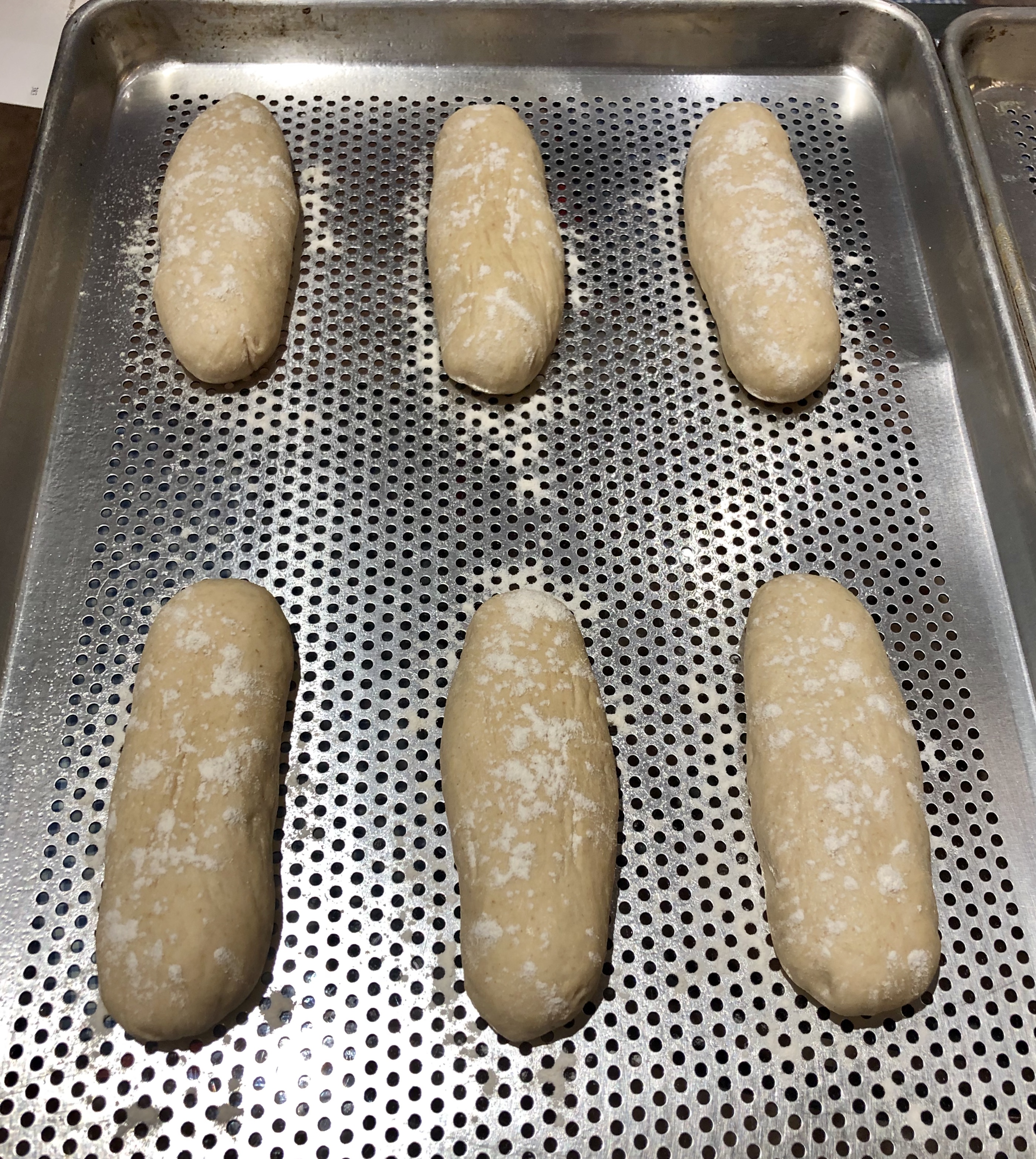
Place kamut rolls, seam-side down, on 2 parchment-lined, or perforated (greased) baking sheets. Dust rolls with flour, then mist with oil spray and cover with kitchen towel or plastic wrap.
Preheat oven to 410ºF/210ºC, including steaming device.

Proof rolls for ca. 30 minutes (finger poke test: an indentation made with your finger should still be elastic, but remain visible). Score each roll lengthwise.
Place kamut rolls in oven, pour a cup of boiling water in steam pan, and bake for 10 minutes. Remove steaming device, rotate (and flip, if you bake on 2 tiers) baking sheet(s), and continue baking for another 15 minutes, until rolls are golden brown and register at least 200ºF/93ºC.
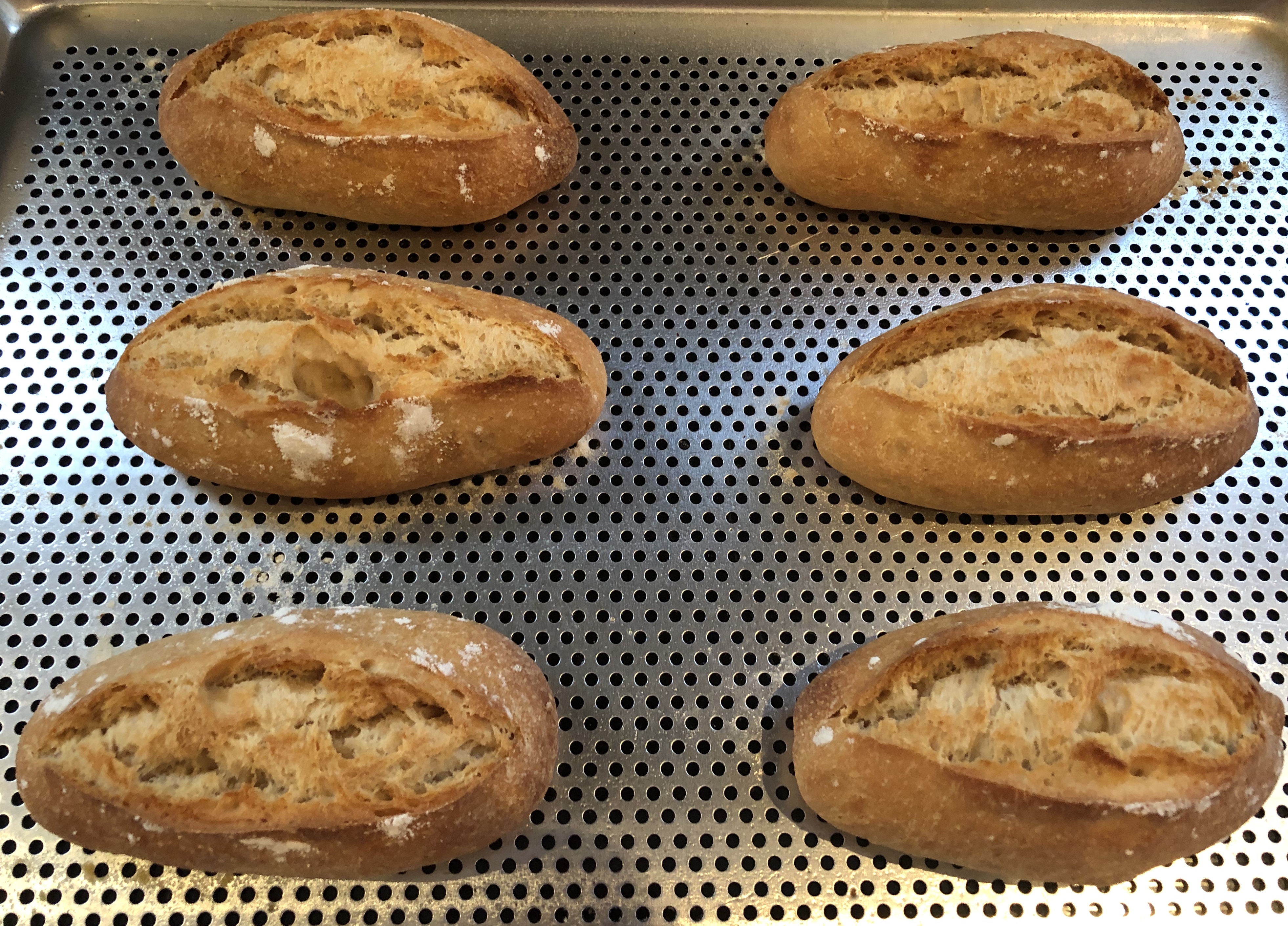
Transfer rolls to wire rack to cool.
STORAGE: Keep Kamut Rolls for 1 day in a brown paper bag, or place in a ZipLock bag in the freezer. Mist (thawed) rolls with water, and re-crisp them at 375ºF/190ºC in oven.
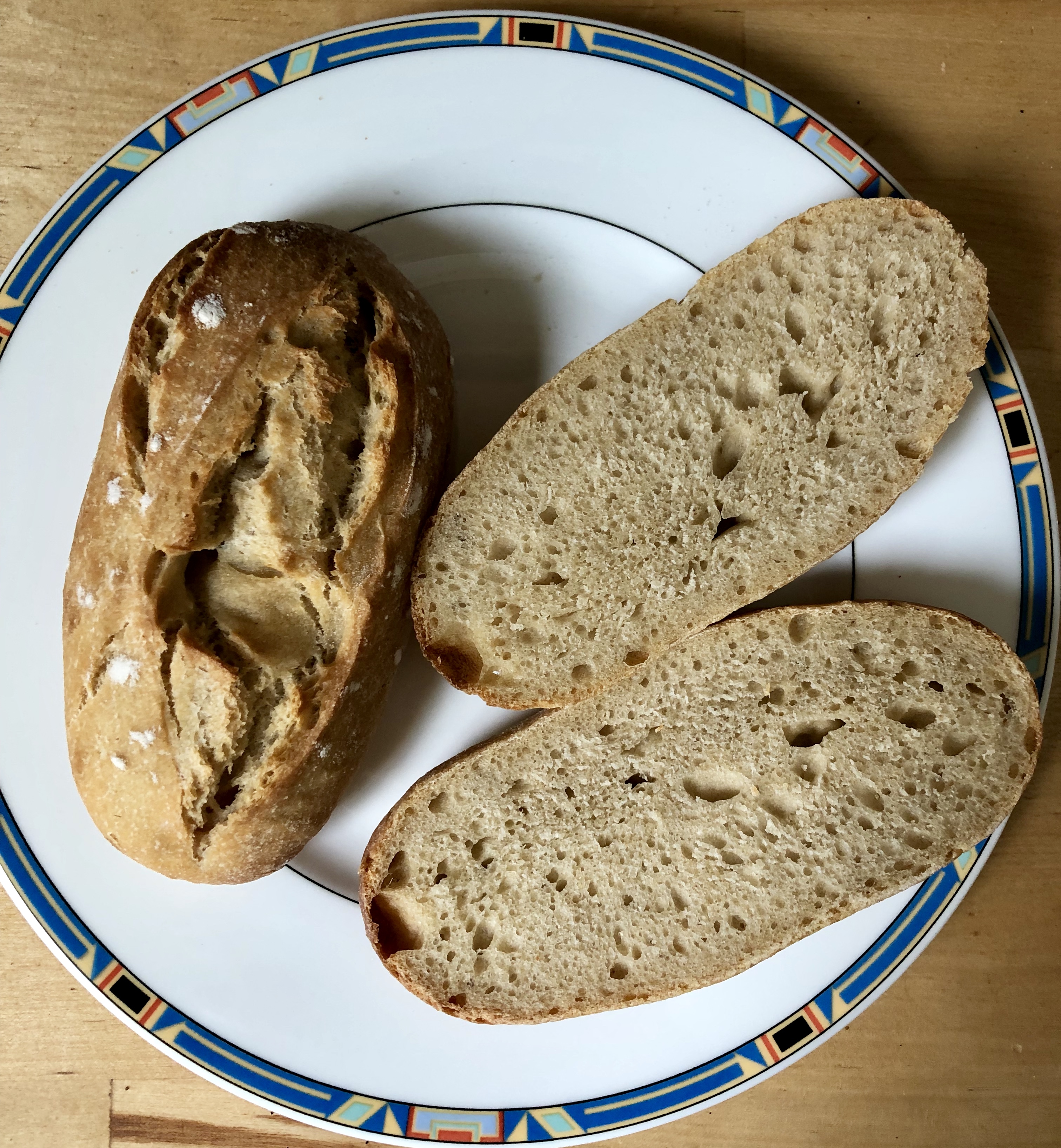
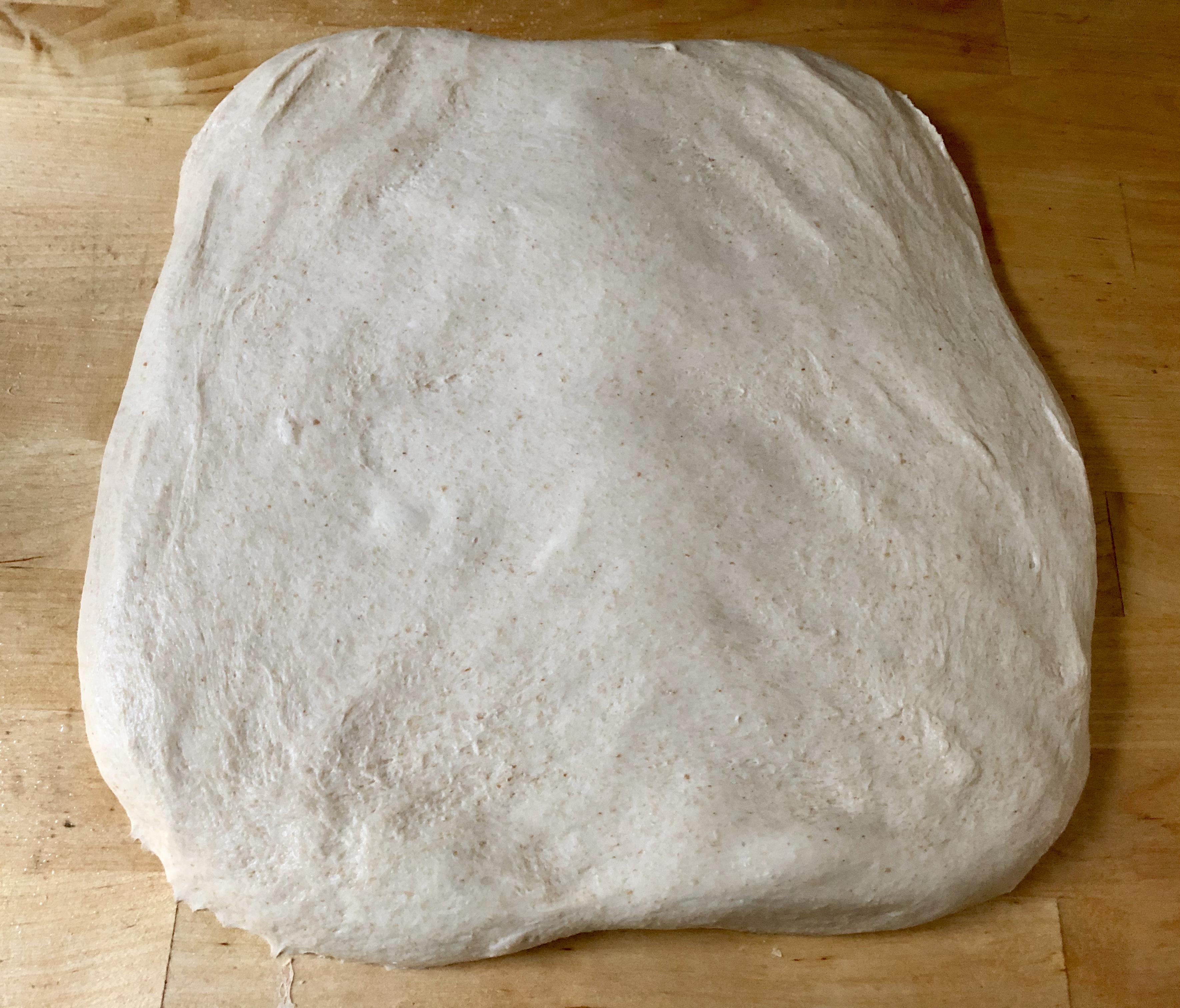
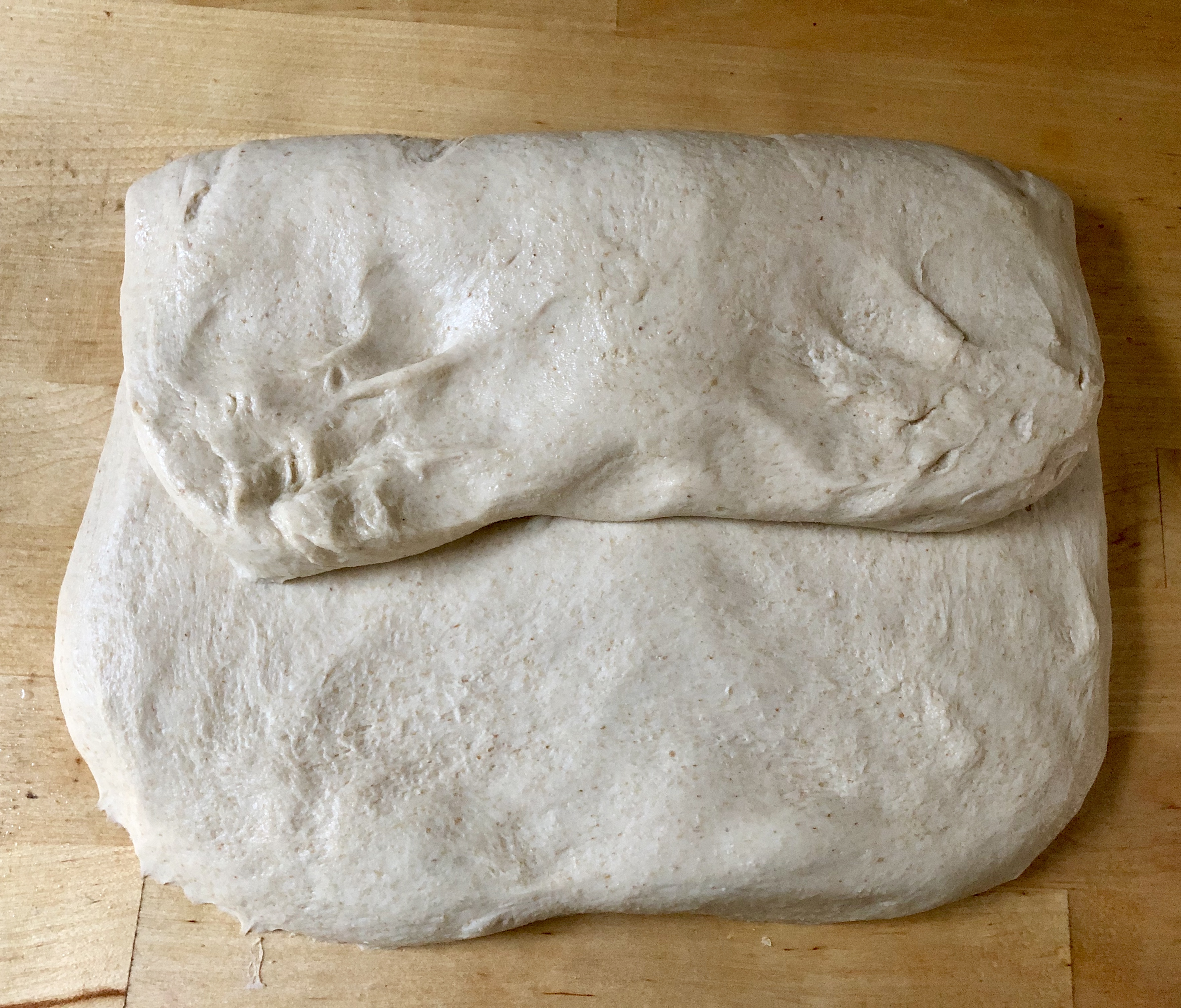

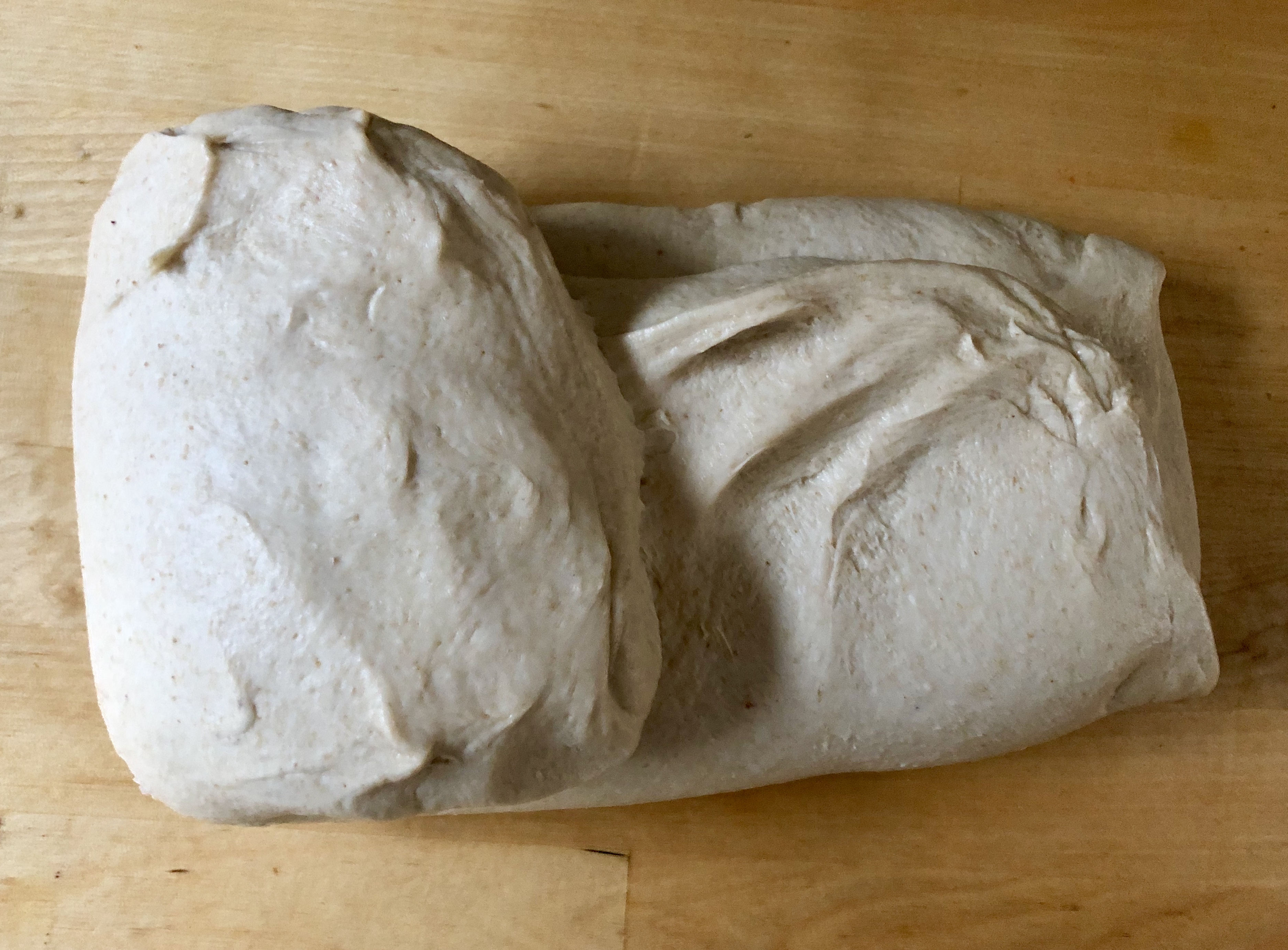
ich rieche förmlich das feine Aroma…. hab allerdings noch nie Kamut verwendet.
LikeLike
Danke, liebe Christine. Kamut hat die gleichen Backeigenschaften wie Emmer oder Einkorn.
LikeLike
It is nice to see you sharing one of your recipes with us again. I’m sure the lunch crowd devoured the rolls…they look crunchy and good.
LikeLike
Thank you, Karen, I hope I will have more time blogging again this year. The rolls are really nice !
LikeLiked by 1 person
I know where I will be looking when I have more time to bake bread! I want a piece of this…….amazing!
LikeLiked by 1 person
Thank you, Diane 🙂
LikeLike
Can anyone tell me where I went wrong? My dough was really sticky and didnt hold shape very well. Even after baked. Was it supposed to rise while it sat overnight in the fridge? I measured everything pretty much to the exact grams.
LikeLike
Hi, Melanie,
I’m sorry that you experienced some difficulties with recipe.
After mixing the dough, it should still be somewhat sticky, but will gain strength during the stretching and folding process.
If the dough is just too sticky (since flours are different, this can happen even if you measure everything exactly) you can adjust with a little more flour until it has the right consistency.
But if your dough didn’t rise at all during the cold fermentation in the fridge – it should almost triple in volume – it could be the yeast that wasn’t active enough. In that case, the dough would remain slack and lose its shape.
Did the rolls have any oven spring when you baked them or did they not rise at all?
LikeLike
Thanks for commenting! The 2nd day after I mixed all the flours and the liquids together I noticed that the dough still stuck to the sides of the bowl quite a bit, unlike the picture on your website where it looked more like a ball.
It also would not hold its shape very well during all the folding and when rolling it into balls.
It did triple in the fridge overnight. I can see how it could have used more flour but this was my first time making a bread like this so I tried to follow to a t.
Once baked they rose about 50% but since they were flat to begin with they still ended up about half the height of the ones you made.
Thank you again for commenting. They taste good anyways!
LikeLiked by 1 person
Next time you bake these I would just start out with less liquid and add more, following rather the visual cues than the exact amounts.
When I try something new, I, also, always follow the recipe and add my notes later, what should be changed. When I bake my American recipes in Hamburg, I’m always aware that flours are different, and might absorb more or less water than I’ used to.
LikeLike
These rolls are outstanding! The flavor is wonderful, the crumb is soft, the outside slightly crunchy, and they were so easy to make. Thanks for sharing your recipe!
LikeLike
Tracy, you made my day! Happy Valentine!
LikeLike